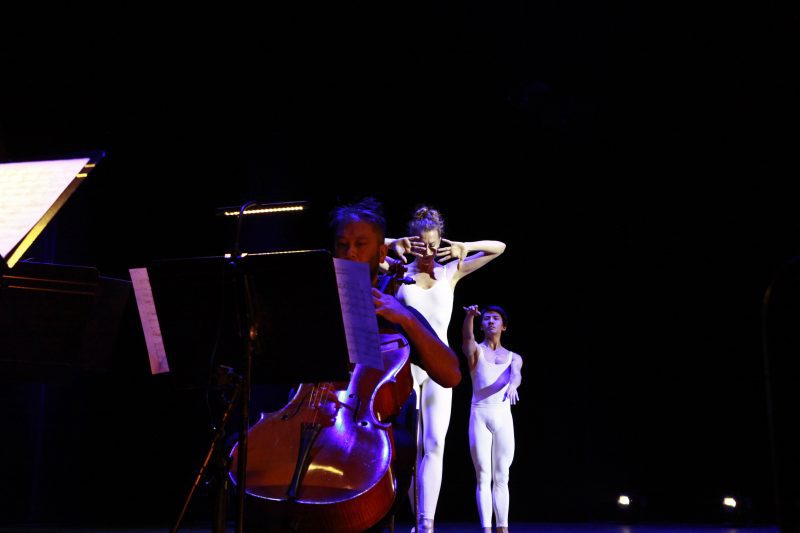
“Take care over style and atmosphere. A mix of technical and musical precision and moving and lively romanticism. Lots of movement. Do not rush between variations. Slowly place yourself with ‘Suspense’”.
Note from Maurice Béjart to Jacqueline Rayet, 1967
The movement, as if wrestled from immobility, is concise, direct and light: “On stage, there will be two bodies in white leotards surrounded by a light that constantly changes and creates worlds in harmony with the music, sometimes an aquarium, sometimes a cathedral. The faces must not betray any emotion; everything must rise from the line of the body and from the relationship between the two dancers”.
The intensity and lyricism that emerge from this pas de deux are created from this economy of means. The work is not a narrative. Through its forms, it only evokes the theme – dear to Maurice Béjart – of the complementarity of the sexes and the search for the absolute in a couple: “The choreography expresses the anguish of loneliness, misunderstanding, contemporary confrontation, this distortion of the minds translated by that of the body. Both at the beginning and at the end, the same geometrical figure unites the two dancers who sometimes separate and sometimes find each other again. In the same way that Webern starts from or ends with traditional chords, Béjart creates classical movements that deform themselves and disintegrate to rise again in the glow of purity regained”. The balance of the choreographic construction – an adage, a variation for each dancer and a final coda – reflects this quest for a perfect accord, an ideal harmony. This academic clarity is coupled with a work on ruptures and altered forms as if to emphasize the uniqueness of each individual. By appropriating the musical concision of Webern, Béjart choreographed an intimate work with unexpected emotional force.


